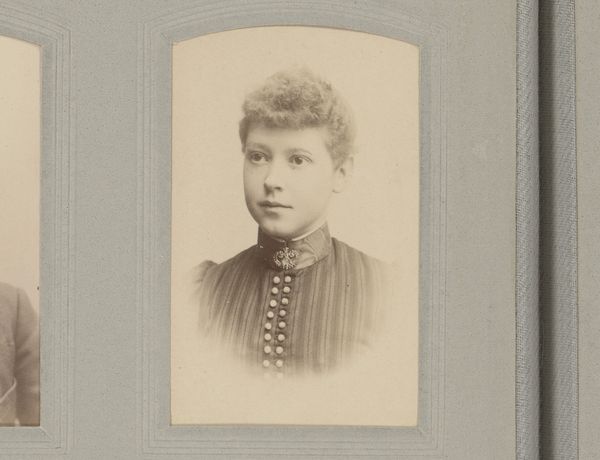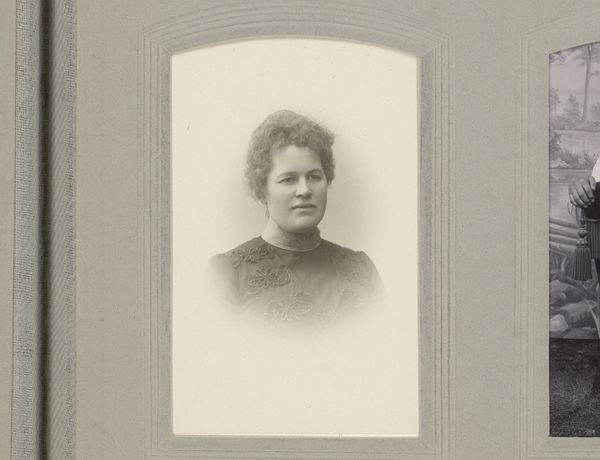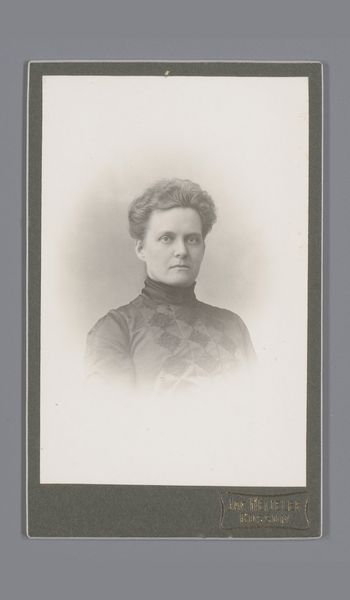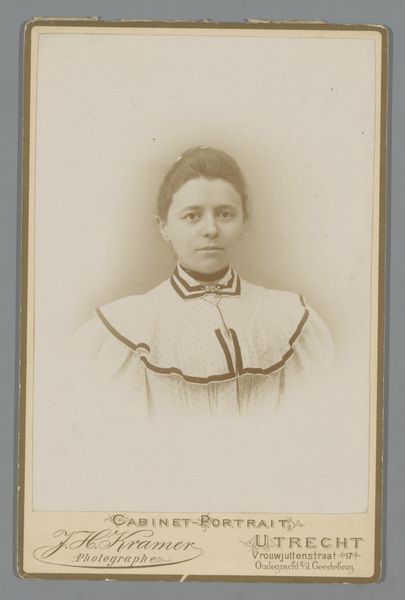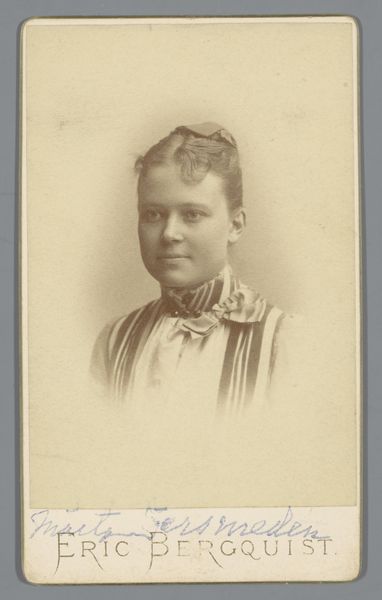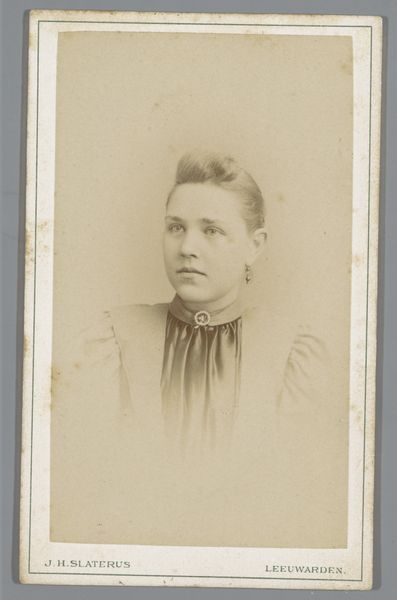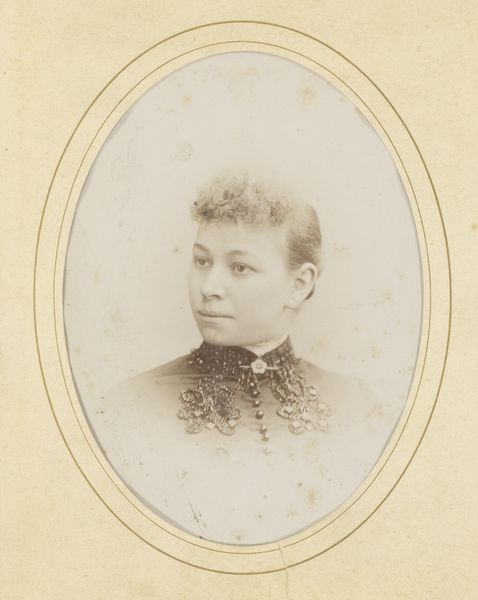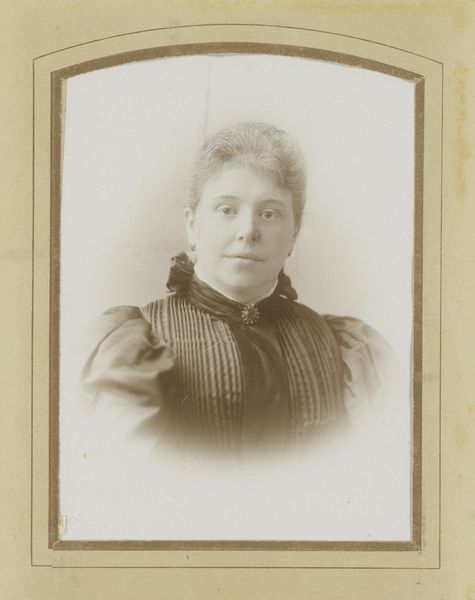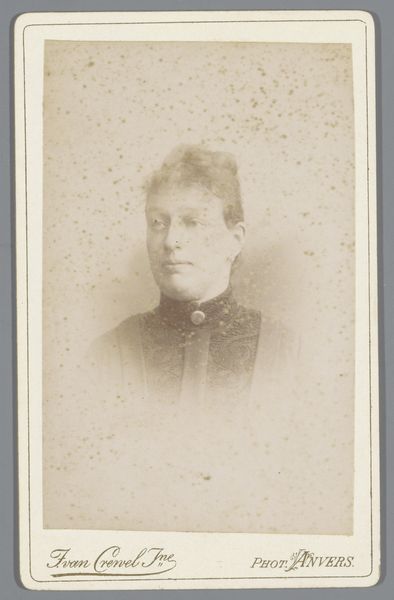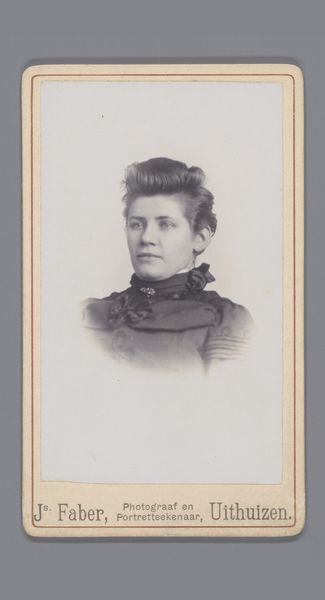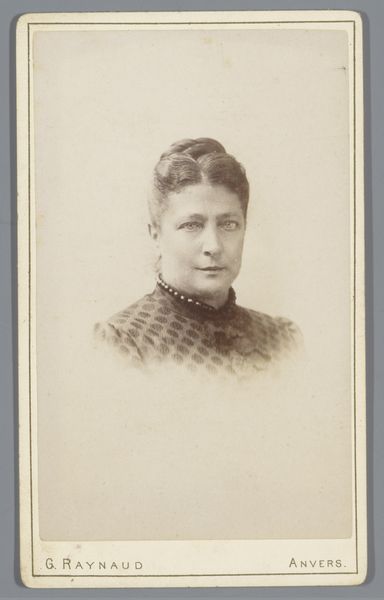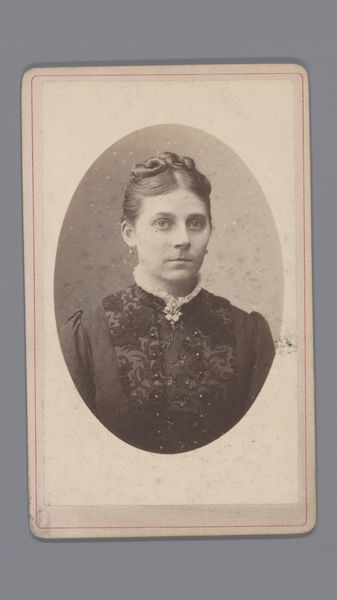
photography, gelatin-silver-print
#
portrait
#
photography
#
gelatin-silver-print
Dimensions: height 83 mm, width 51 mm
Copyright: Rijks Museum: Open Domain
Curator: Looking at "Portret van een jonge vrouw," an undated gelatin-silver print believed to be created between 1876 and 1900 by Axel Rydin, one is immediately struck by its stillness. Editor: Yes, it possesses a certain austerity, doesn't it? The somber tones and the formal pose convey a reserved quality, almost as if capturing the young woman's stoicism more than her likeness. It feels posed for posterity. Curator: Absolutely. I see it as an act of claiming space in a rapidly industrializing society. Rydin’s choice of photography offered wider access to portraiture, yet societal constraints heavily influenced women’s self-presentation. The subject’s attire and composed gaze suggest a carefully constructed identity, reflective of prevailing ideals around femininity and respectability. Editor: And how was the material itself part of that construct? A gelatin silver print implied a specific production method, labor, and accessibility. These prints were often made in studios; understanding the work involved gives insight into social structures too. Curator: Exactly. There’s tension between individuality and the commodification of images during this period. Were women in control of their own self-image when subject to all this new image-making technology? Editor: Good question. How were studios employing other workers, most likely female ones, to assist in retouching prints like these? Whose labour is visible, and whose is not? The very composition echoes pre-existing formal constraints around photography. Curator: By viewing these materials and processes we can look closely at social change. Here, photography immortalized, but within complex dynamics of labor, material and social hierarchies of its own era. Editor: I'm struck how the material reality speaks so clearly. The subtle silver gelatin surface highlights a historical confluence of social image creation. Curator: This analysis really opens avenues for discussing image-making, not as passive reception but within systems of gender, labor, and economic change during a key phase in history. Editor: Agreed. It emphasizes understanding an image from production up—as opposed to from subject downward!
Comments
No comments
Be the first to comment and join the conversation on the ultimate creative platform.
